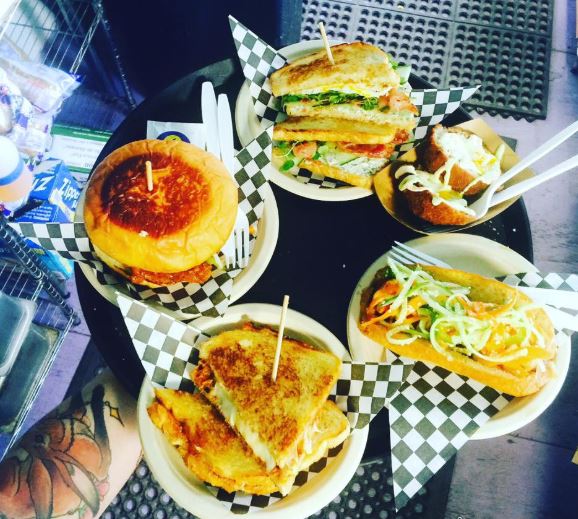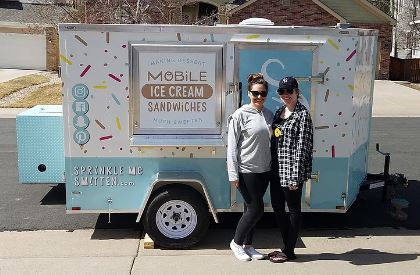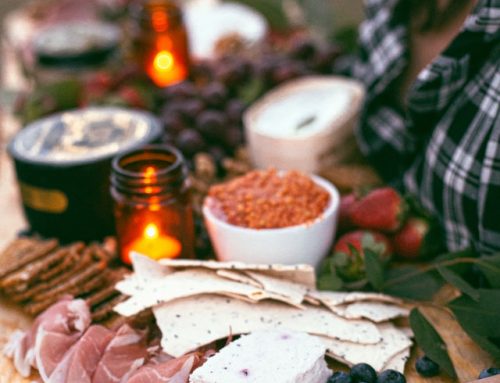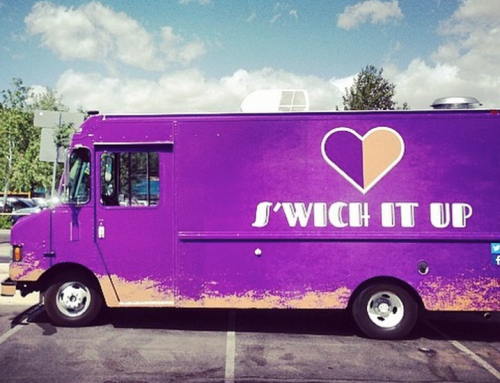Your new catering business has started to make some noise and get some traction in your community. Maybe you’ve catered a Super Bowl party for friends or thrown a birthday party that 6-year-old Sebastian (and his 14 friends) are never going to forget. But you’ve known from the beginning that for your business to really get off the ground, you’re going to need to find away to crack into the elusive motherload of catering events: The wedding.
Catering a wedding for a first-timer can be incredibly intimidating. Not only are you probably working with a much larger budget, but also managing the responsibility of delivering a fairytale event to your bride or groom. It’s a lot to take on, but with some careful planning (and being aware of a few potential pitfalls), your first wedding client will give you rave reviews and remember your crab cakes for the rest of their lives. Here’s the steps to follow to pull off your first wedding reception.
Related Reading: How I Started a Legit Catering Business Out of My House
Figure out what kind of wedding caterer you are.
Wedding catering can take many forms, these days; catering for a wedding isn’t limited to white linen napkins and waitstaff in tuxedos passing trays of canapés. While that style of wedding catering may most suit you and your business, you should also consider less formal options for a catered meal, including buffet service, pig roasts or BBQ, wine and cheese events, or even fondue parties.
Narrowing down the scope of the services you offer will give you a better sense of the equipment you need (for example, do you need two dozen steam tables, or a smoker big enough to hold an entire hog?) and save you money in the long run. Don’t try to be everything to everyone.
Find Your Ideal Client.
Because you don’t have an established reputation as wedding caterer, your first client (or first few clients) are likely to be friends or family members who will be patient with the learning curve, and who will probably be quick to forgive you if things don’t go exactly as planned. These gigs probably won’t pay as much (if at all), but they will help you to learn the ins and outs of this kind of event, with a patient client. You should also reach out to wedding planners and coordinators in your area, as well as party rental supply companies, flower shops, bridal shops, and jewelry stores, and ask to be added to their list of vendors.
These businesses will pass your name along to qualified potential clients, and will do a lot of the pre-screening work for you. Make sure your website is updated with sample menu items, pricing, and contact information. Get a booth at a bridal show, and be prepared to offer samples of some of your favorite dishes.

Don’t be afraid to get creative with your wedding catering menu.
The Five Best Ways To Find Wedding Catering Clients
In the early days of your wedding business, you’ll need to hustle to find work. The reality is you’ll need to do your first couple weddings for little or no cost to gain some experience and a portfolio of work. Almost every successful wedding caterer works for free in the early days.
- Offer to Friends / Family for First Gig: Find someone you know that wants to save money on catering for their wedding. Offer to work free of charge and be excited about getting experience with your first catering event. It will be a lot of work, but you can use the photos of wedding to demonstrate your skills to future clients.
- Word of Mouth: If you do a good job, don’t be surprised if you are offered more wedding catering opportunities after your first freebie. When you pull off a few good weddings, word will start to get around about your services and folks will begin making recommendations. Be nice to everyone at an event you cater because each event is an opportunity to book more business.
- Build a Website or Facebook Page: After you’ve got a body of work together by catering some events, start publishing photos, videos, menus and pricing via website or Facebook page. When researching caterers, everyone will conduct their due diligence online and want to see what your past work is like and pricing.
- Attend Bridal Shows: The big bridal shows are usually held in the winter or early spring in advance of wedding season. This is particularly true if you live in the Midwest or a colder climate. Most couples prefer outdoor weddings. These bridal shows are the ideal place to show photos of your food, provide free samples, and network with families that are planning their son and daughters big day.
- Partner with Local Vendors: Last but not least, you need to begin networking with other vendors that support the wedding industry like wedding planners, flower shop owners, bands, photographers, other caterers, and managers at popular wedding venues. According to ValuePenguin, the average wedding now costs almost $30,000 so there are many people interested in profiting from these events to connect with. Make it a habit to connect with these people at each wedding you participate in.
While you’ll be less picky about this at first, eventually you’ll want to stay away from people looking for wedding catering on a budget. There’s certainly nothing wrong with maintaining a budget from the perspective of the bride and groom and there are things that you can certainly do to help curb expenses by offering lower cost menu items. But with that being said, after you’ve gotten a few free wedding catering events under your belt for experience you need to make a worthwhile profit at the end of the wedding. There’s too much time and effort on your end needed to pull off a successful wedding event to short change yourself in this way.
Get a Simple Contract Ready
Before you pick up your first client, you’ll want to have airtight contracts in place that prevent you from losing money in the event the bride or groom’s plans change. Speak with other wedding caterers in your area about potential pitfalls, and make sure you have a signed contract in hand (ideally with accompanying deposit) before you start spending money on things like tastings for the bride-to-be. Horror stories about where would-be wedding caterers spend hundreds or thousands of dollars and countless hours preparing custom tastings for potential clients, only to have them vanish when it comes time to sign a contract. Online document filing services can be great resources for providing starting templates for your contract.

In recent years, wedding catering menus have become more casual. Be sure to ask your client what types of food they would like served so you match their vision.
Free Catering Agreement Templates in PDF and Word Doc Format
Of course you could also edit some of the free catering agreement templates below and apply them to your business. We’ve included a template in Word that you can download below. Feel free to add your own logo to this document and edit based on your needs. We’ve also provided some PDFs and links to other resources we found online that you can see what other businesses have done.
Catering-Agreement-Template: Download, edit, and utilize this example catering contract in your business.
Catering Agreement PDF: Catering contract in PDF format from Down Home Delivery & Catering. This is a catering agreement with above average detail even gets specific into what will happen with leftovers at an event. This is worth reviewing.
Catering Agreement Word Doc: Catering agreement on RestaurantOwner.
Draft a sample menu and figure out pricing structure.
Remember, weddings often have guest lists that can reach into the hundreds. Figure out how your favorite recipes can be adapted to serve large volumes of people, taking into account other considerations like food handling and safety, which items will need to be kept warm and how, and which recipes present high-margin ingredients in an artful and memorable way. Figuring out what kinds of food to offer for your catering events is all about squeezing a silk purse out of a sow’s ear; even inexpensive platters of cheese and crudités can be dressed up and given a premium price. Determine price per person for every available dish on your menu, and allow your bride and groom to pick and choose what they’d like and what works for their individual budget.
Many caterers will separate their menu with buffet and plated service menu options. The plated meals will always be more to account for higher level of service, preparation and also sides that are built into the meal. You can outline your own catering menu with simple pricing and brief descriptions of each menu item as shown in the examples below.
You may also determine that you want to use stations instead of a traditional buffet line. By creating stations, you help reduce wait times among guests, which most people will appreciate. Depending on the size of event, you may have different stations setup for salad, desserts, appetizers, main courses like roast beef and other entrees.
Wedding Catering Menu Ideas With Pricing Options
Buffet Style Catering Options
Swedish Meatballs – $75 per tray – Tray of approximately 40 Swedish meatballs serves approximately 10 people.
Fancy Cheese Plate – $100 per plate – Gourmet cheese tray featuring Wisconsin cheddar, Gouda, and Mozzarella. Includes garnish of black and green olives, and crackers.
Caesar Side Salad – $50 per tray – A Caesar salad with Romaine lettuce, freshly grated Parmesan cheese, and dressing. Serves approximately 10 guests.
Garden Side Salad – $45 per tray – A fresh garden salad with all the veggies. This salad includes a variety of goodies like tomato, red onion, cheddar cheese, croutons, and cucumber. Comes with Ranch, Thousand Island, and Italian dressing standard. Serves approximately 10 guests.
Butter Nut Squash Ravioli – $150 – Butter nut squash with sun-dried tomatoes and parmesan cheese smothered in a house-made cream sauce. Serves 10 guests.
Lobster Macaroni and Cheese – $150 – An adult style macaroni and cheese with big chunks of lobster. Amped up with crunchy bread crumbs and three types of cheese. Serves 10 guests.
Plated Meal Options
New York Steak and Mashed Potatoes – $80 per plate – An organic, 10 oz. free-range New York Strip steak cooked your guests requests. Side of garlic mashed potatoes and seasonal vegetable is also included.
Herb Marinated Chicken Breast with Green Beans – $60 per plate – A 6 oz. chicken breast marinated in our trademark herb marinade for 24 hours. Comes with a side of green beans and corn.
Memphis Style Ribs with Sides – $80 per plate – Memphis Style Ribs that are slow smoked for at least 12 hours. This meal comes with a side of slaw, corn on the cob, beans, and a roll.
Traditional Italian Lasagna – $65 per plate – Momma Mia! This traditional meat lasagna comes with a garden side salad and breadstick.
Pasta Pavarotti – $50 per plate – This house special features noodles tossed with zucchini, chicken, mushrooms, and fresh basil in a creamy garlic sauce. Comes with a side of Italian wedding soup.
Schedule a meeting with the bride and groom.
Your first meeting with your potential clients is as much about getting a feel for the relationship, as it is about discussing the nuts and bolts of menu cost. Sometimes, you’ll know right away when you aren’t a good fit for a potential client, and in those instances, it’s best to know when to walk away or recommend someone else more suited to that particular couple’s needs. Trying to “force” your way through a catering event with a challenging bride and groom is a recipe for disappointment, stress, and anxiety, all the way around.
Seriously, this is a really important one. Don’t be afraid to turn down clients that aren’t a good fit for your skills or working style. You’ll save yourself months of headaches in advance of the wedding by avoiding clients you’re not excited to work with for whatever reason. If you’re looking for reasons to respectfully decline an invitation you can simply state that you are unavailable for catering on the date of their wedding or simply state that the style or food they want served isn’t your specialty. Be quick to offer recommendations of other local caterers that might be a better fit too in an effort to be as helpful as possible.
Develop a Standard Wedding Catering Questionnaire
You’ll need to develop a template of questions you ask prospective clients before moving forward with any wedding. You can email this in advance of the initial meeting with the bride and groom then review the information together. By asking a set of simple, standardized questions to potential customers you’ll get clear on what the couple hopes to get from the food service at the wedding.
You can create the questionnaire simply enough. These questions can be stored on a Word Document on your computer and returned to you by email. Or you could create a fancy form for free using Google Forms that your customers fill out. Finally, you could get the information from customers during an in-person consultation where you record their feedback on a notepad.
14 Key Questions to Ask Before Catering a Wedding:
- How many people will be in attendance?
- Is this a formal, semi-formal, or casual wedding?
- Where is the event being held? (Address)
- What’s the date and time of the reception?
- What type of catering service would you like? (Buffet style, Sit Down Plated Meal)
- What’s your desired per person budget for the event? ($30 per person, $40 per person, $50 per person)
- What appetizers would you like in advance of the meal?
- What protein options would you like available? (Beef, Chicken, Fish, Vegetarian Options)
- What dessert options would you like available? (Cake, cupcakes, donuts, pie)
- What non-alcoholic beverages should be available? (Punch, soda, ice tea, ice water)
- Do you want a special kids menu?
- What’s the overall vision for the food at your wedding?
- Who will be paying for the catering services?
- Are there any other parties involved in wedding planning? Please provide contact information and title. (Wedding planner, father of the bride)
Many of these questions may seem obvious, but there important to get down in writing so you have a record of everything that was said. After a questionnaire is completed, be sure to send a copy of the responses to your potential client for review. This will provide them with the opportunity to correct or update any information.
As the wedding date approaches, it’s not uncommon for this information to change. Aunts and uncles come out of the woodwork and the number of people expected to attend may change. Be prepared to adjust to these (hopefully) minor changes.
From a business perspective, make sure to get the contact information of the individual that’s footing the bill for the wedding. Traditionally, this is the father of the bride, but could be a grand parent or the bride and groom themselves. If this is the case, make sure you get this persons contact information and involve them in the planning process. It would be wise to invite them to the tasting and make sure they are aware of the cost associated with the menu decision. You don’t want the father-of-the-bride sticker shock if he’s the one footing the bill.
Related Reading: 12 Tips for Dreaming Up a Yummy Name for Your Catering Business
One final tip is that the 14 questions above should serve as a starting point. I recommend adding some a few “getting to know you” questions. It will benefit you to make small talk with the couple to get to know them first. Ask how the couple met. Ask what their vision is for the food being served. This will help you to develop a report with the couple that will ensure they feel valued and confirm you as the right choice to help bring to life their big day. This is so much more than a catering drop-off and your soft skills will help develop your business as much as the food itself.
Remember when I mentioned it was the last tip in the final paragraph? Well, I’ve got one more for you and I promise this is the last point. Make to proactively reach out to touch base with the couple one month and two weeks out from the wedding date to confirm that nothing has changed. Often, you may be first meeting with the couple 6 – 12 months in advance of the wedding when the initial plans are made. A lot can change in that time period, but if you build follow-up into your process it will results in less surprises and happier customers. At the very least most folks will appreciate you checking in even if nothing has changed.
Examples of Catering Questionnaires / Templates: Here are some examples of questions caterers ask before accepting an opportunity. Use these examples to implement in your business.
Standard Catering Questionnaire – Lady K’s Catering, LLC
Wedding Reception Questionnaire – Sassafrass Catering Template
Wedding Catering Questionnaire – Download our template inside of a Word Doc for easy editing. This is free to use and update as needed to fit your needs.
Plan where food will be prepared and check out the venue.

Check out the venue in-person before catering any event.
Different wedding venues will have different requirements for food preparation. Some venues include the use of a full-scale commercial kitchen with their booking fees, but many don’t. You will need to have a licensed commercial kitchen of your own for handling cooking. If that kitchen is offsite or not a part of the venue, you’ll also need to plan for how you will transport hot food to the event, while managing food safety concerns and requirements. Remember that you are ultimately responsible for the safety of the wedding party and all of its guests.
One idea to knock out two birds with with one stone so to speak is to plan for your initial meeting with the bride and the groom to be at the venue. This gives you the opportunity to share ideas on how best serve guests within the venue. Since you’re on-site, you may also be able to connect with the manager in-person and understand how other weddings have been approached in the past. Often, you may find that the venue manager already has a good process setup for food service. In most cases, it will make sense to follow any advise or input offered based on their experience at the venue.
Rent your service items and equipment, instead of buying them.
Depending on the style of weddings you plan to cater, your equipment needs are going to vary wildly. At minimum, you’ll probably need: Steam tables, serving equipment, service items including flatware, plates, and linens, and even potentially tables, chairs, and tents (check out our “Ultimate Catering Equipment Checklist,” for more ideas). When just getting started, contract with equipment rental companies in your area to find the things you needs. You’ll want to buy these items yourself as soon as possible to cut down on overhead, but rentals are a great way to get started.
Find capable staff.

Don’t try to do it alone!
Serving an army of 100 people a three course meal (with passed hors d’oeuvres) will require a seasoned army of catering professionals. Now isn’t the time to call in favors from your college-aged nephew or your semi-employed roommate; experienced catering cooks, servers and bartenders can be the key to pulling off the entire event successfully. If you have any friends with front-of-house restaurant experience, ask them if they’d like to make a few dollars on the side helping with your special event. Most will be eager to earn a flat-rate for one night’s work. Before long, you’ll have a trusted roster of professionals that you can pull from as needed.
Catering your first wedding can be a daunting task, or even an intimidating one. But if you work through the steps one at a time, and communicate constantly with the bride and groom to set up appropriate expectations, there’s no reason for your first event to be anything less than a smashing success. Plan ahead, avoid some of the potential pitfalls we’ve outlined above, and have a contingency plan for any emergencies that may arise. Most of all, remember to take a minute to enjoy yourself; you’ve been asked to be a part of a very special day in a young couple’s life, and that’s a pretty big honor. You can do this.



